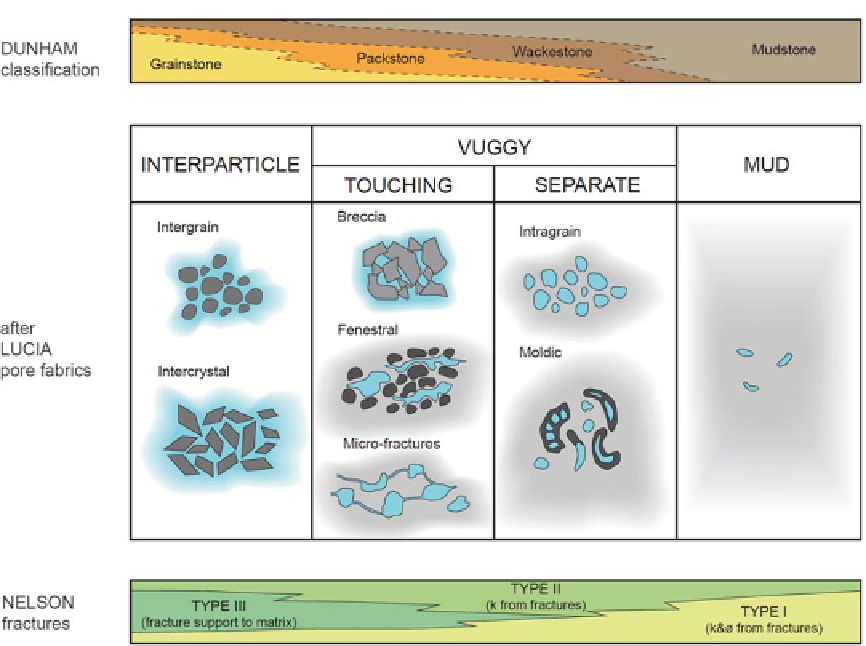Geoscience Reference
In-Depth Information
Fig. 6.36
Carbonate pore fabrics; modified after Lucia (
2007
) for selecting reservoir modelling elements but including
fracture sets, mudstone, the Dunham classification and the typical overlap with Nelson's fracture classification
6.6.3 Diagenesis
functions. The example in Fig.
6.38
illustrates this
for a thick carbonate-evaporite interval in which
diagenesis dominates the depositional fabric and
matrix permeability is controlled by dolomitisation.
The conceptual model is for the expulsion of
dolomitising fluids due to compaction in the basin
centre, leading to best reservoir properties along the
basin margins. The permeability distribution can
therefore be modelled regionally by applying trends
sensitive to depth and structural location. The
porosity model is generated from upscaled (core
calibrated) porosity logs, but there is no porosity-
permeability relationship
per se
.
A second key difference between clastic and car-
bonate reservoir characterisation is the complexity
of the diagenetic history. The diagenetic history
will provide much of the back story to the concept
for small-scale permeability architecture - deemed
necessary from the discussion above. For reservoir
modelling, the diagenesis storyline needs to be
converted into a model parameter which can be
overlain, or may completely replace, the deposi-
tional architecture. In clastics, it is unusual for the
original depositional fabric to be completely
obscured during diagenesis. In carbonates, this is
much more common, to the point that traditional
rock modelling as described in Chap.
2
may no
longer be necessary, and the process of modelling
can begin with effective property modelling.
In this case, the desired reservoir model may in
fact be a description of the diagenetic history,
parameterised into a set of overlying trends or
6.6.4 Fractures and Karst
The third key difference between carbonates and
clastics lies in the mechanical properties of limes-
tones and dolomites. These predispose carbonates to
natural
fracturing, notably jointing,
to a much

